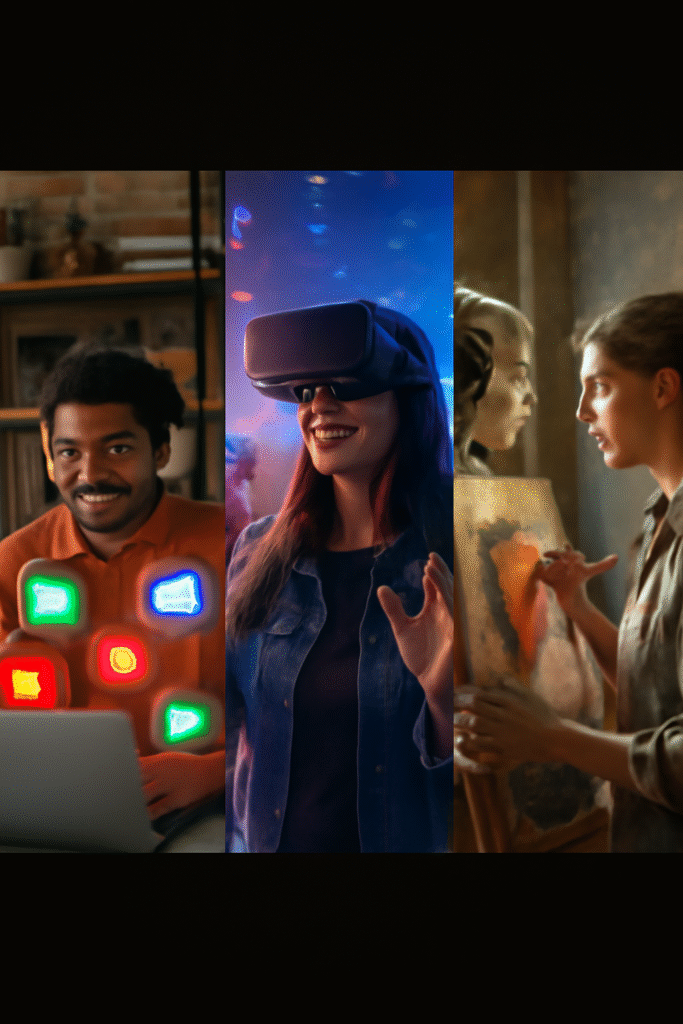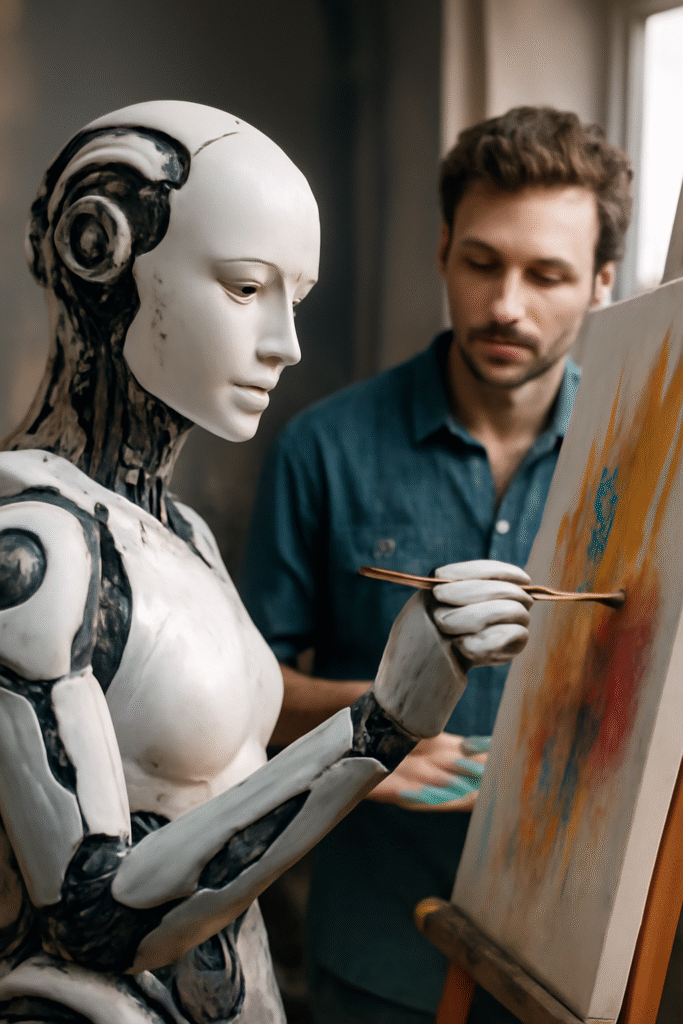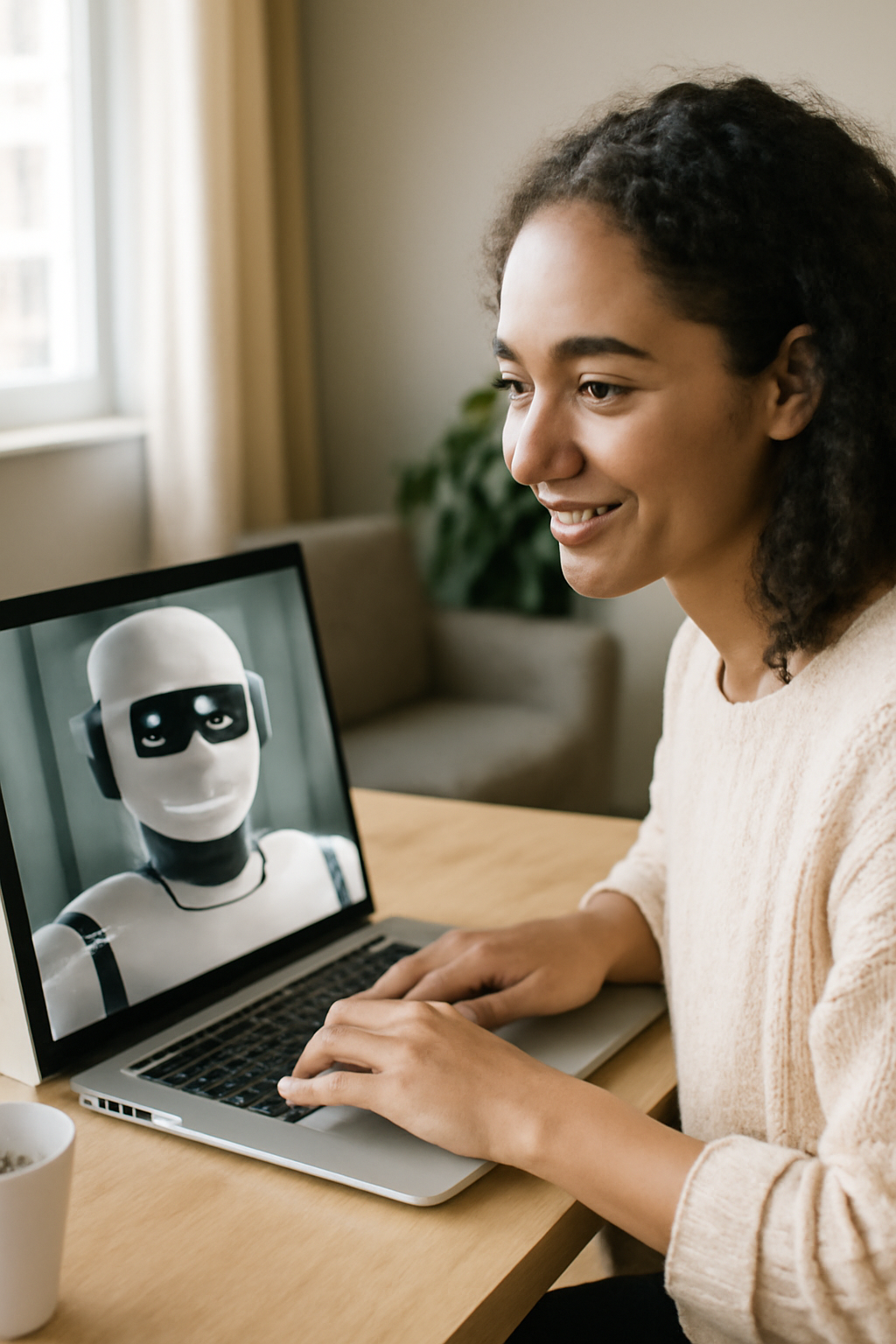From the rise of streaming to immersive virtual worlds — how digital innovation reshapes what we believe in.
Pop culture has always acted as a kind of social mirror — one that reflects not just our daily habits, but our collective identity.
It absorbs our dreams, insecurities, passions, and contradictions, then projects them back to us through art, entertainment, and media.
In the twenty‑first century, technology and pop culture became so intertwined that they now evolve together.
One inspires the other: technology advances shape artistic expression, while popular culture determines how we use technology and how it fits into our emotional lives.
This relationship doesn’t simply change how we consume creativity — it transforms the way we understand connection, individuality, and meaning in a hyperconnected world.
Let’s dive into three lenses through which this bond reveals what we, as a global society, truly value.
1. Streaming and the Age of Infinite Choice: Convenience, Diversity, and the Price of Access

The digital era has shifted cultural consumption into a space of constant availability.
Streaming platforms for music, video, and gaming — from Spotify to Netflix to Xbox Game Pass — have made art as immediate as electricity.
We no longer wait; we tap, and it appears.
Physical media and broadcast schedules gave way to a landscape of infinite options, curated by code and accessible anywhere.
The Cultural Shift
Streaming turned access into a basic expectation rather than a privilege.
Independent creators now reach the same audiences once reserved for corporations.
Music from Seoul, Nairobi, or São Paulo can go viral in New York overnight.
Global exchange became effortless, unlocking a more plural understanding of culture itself.
Yet, behind this democratization lies a paradox.
The same algorithms that introduce us to new voices also learn our habits too well — building digital comfort zones that repeat what feels familiar.
We celebrate endless choice, but often move within invisible boundaries programmed to hold our attention.
This duality exposes our modern values: a hunger for convenience, a genuine curiosity for diversity, but also a quiet surrender to systems that shape what we see and hear.
Freedom and automation now coexist — sometimes uneasily — in the same playlist.
2. Augmented Realities: Between Escape and Belonging

New digital environments are transforming spectators into participants.
Through augmented and virtual reality, culture is no longer just something we observe — it’s something we step into.
From interactive installations and AR filters to massive concerts inside virtual worlds, technology turns imagination into shared experience.
A fan can stand side by side with millions of others, each represented by an avatar within one digital stage — a kind of collective dream that stretches geography and reality alike.
Why It Matters
These immersive formats reveal a longing that runs deeper than entertainment.
We crave experiences that feel alive, stories that allow us to enter rather than watch.
Virtual spaces satisfy that craving for presence and participation — giving us a sense of belonging in modern times, even when mediated by screens.
But in this search for depth and connection, a new tension emerges:
Are we enriching our relationships, or escaping from them?
When every moment can be simulated, authenticity becomes harder to define.
We begin to notice that what we value is not necessarily what’s real, but what feels meaningful — even if crafted inside a digital illusion.
What these experiences truly reveal is our desire to be both together and elsewhere at the same time — to blend imagination and identity in equal measure.
3. Artificial Intelligence and the Reinvention of Creativity

Few forces are changing culture as radically as artificial intelligence.
Once a background system of recommendations, AI now participates directly in creation — composing music, editing films, designing art, even generating synthetic performers.
A New Relationship Between Human and Machine
Artificial intelligence amplifies personal choice to extreme levels.
Algorithms predict what we might love before we even ask, feeding us an ongoing stream of tailored content.
In studios and labs, artists collaborate with machines to expand what’s musically or visually possible.
This evolution reveals our complex relationship with authorship and originality.
We celebrate customization and speed, yet we also mourn the spontaneity and imperfection that make human art alive.
If a program can write a song that moves us, does it matter whether it comes from a heart or a hard drive?
At its core, the rise of AI challenges us to re‑examine what we define as creative.
It asks whether expression lies in the maker, the process, or the emotional response it evokes.
Our values around creativity are shifting — from celebrating individuality to exploring collaboration between human intuition and machine intelligence.
The Cultural Mirror of the Digital Age

When pop culture meets technology, the result is more than innovation — it’s revelation.
Each new tool we embrace reflects a deeper truth about our species: our need for connection, our fascination with convenience, our endless curiosity, and our conflicted pursuit of authenticity in an increasingly synthetic world.
Streaming platforms speak to our impatience and inclusivity.
Immersive realities capture our longing to experience more than one life at a time.
Artificial intelligence exposes both our genius for invention and our fear of being replaced by it.
Taken together, these transformations remind us that every technological leap begins with a human emotion — the desire to know, to share, to belong.
Pop culture evolves, but its heart remains the same: a coded reflection of who we are and who we wish to become.
